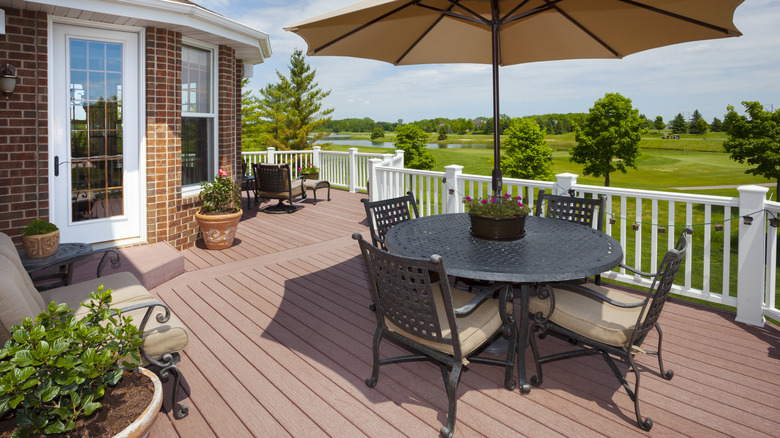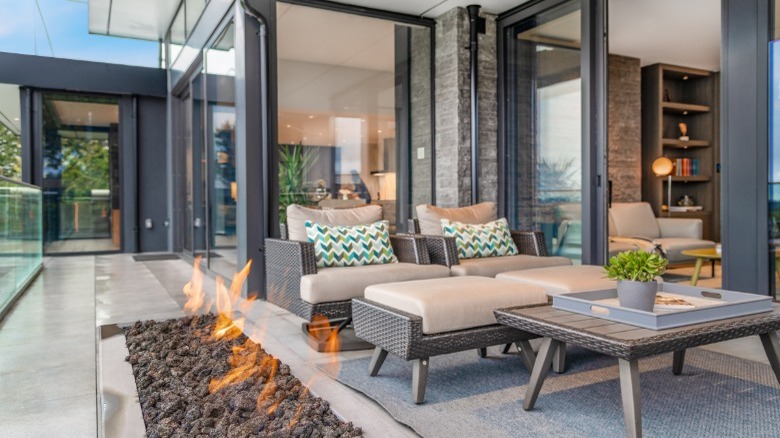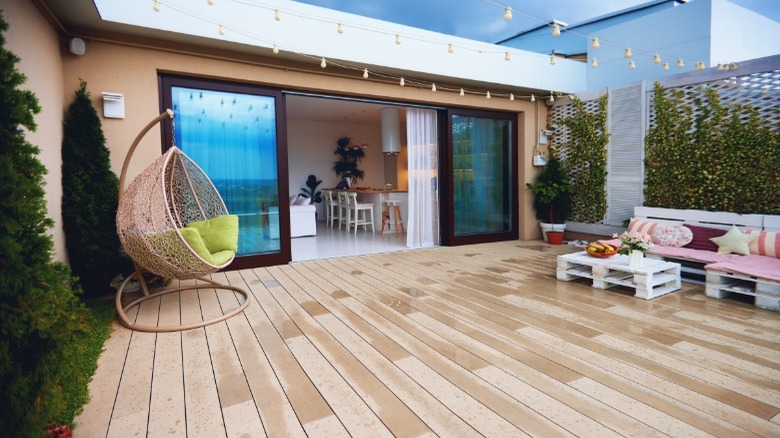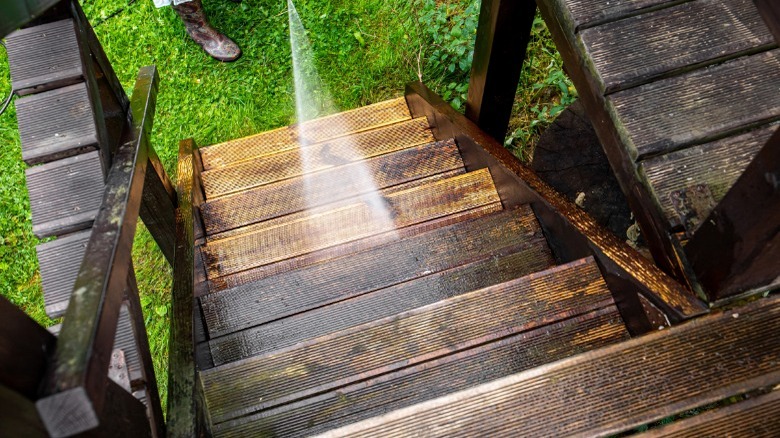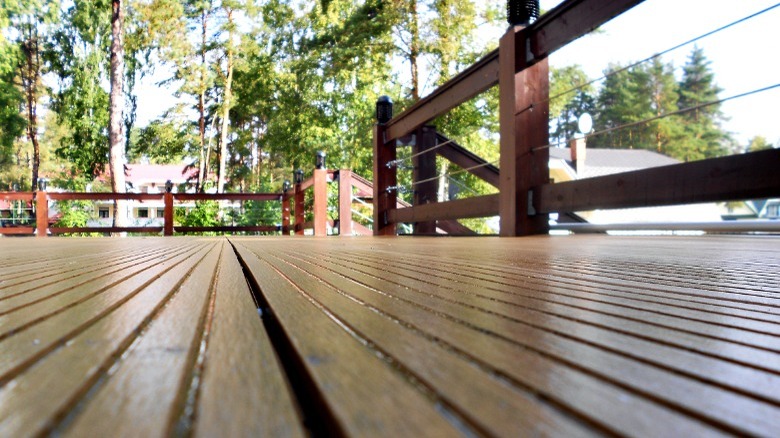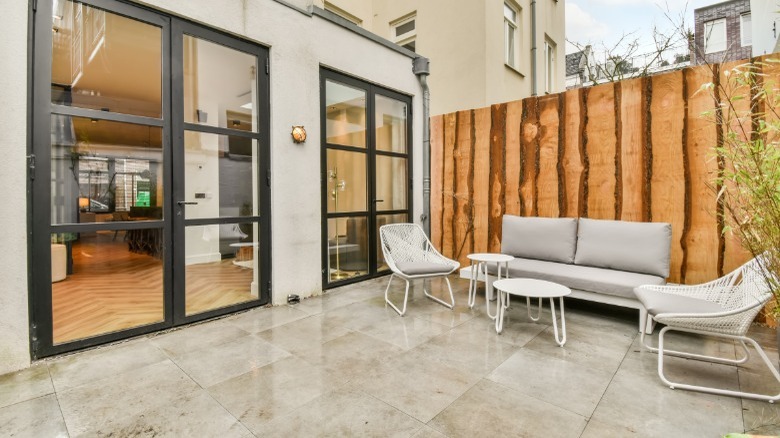Big Differences To Consider When Choosing Between A Patio And Deck
There are a few major differences to consider when choosing between a patio and a deck, one of them being the level of the structure. In other words, how high off the ground it is – or isn't. Another is the privacy level, or the view, depending on how you look at it. There are also differences in the costs and resale values, maintenance, and durability factors, and there are considerations regarding the suitability of the terrain you intend to build on.
Trying to decide between designing your perfect patio or dancing on the deck of your dreams can be a tough decision, especially if your property is suitable for either. One of the primary factors to think about is the materials you want to build from, as this will dictate the overall aesthetic and can sometimes limit what can go on top. Designing an outdoor living space and entertainment area can be creative and fun, but before you can really get started, you need to know whether it's going to be on a patio or a deck.
The materials
One of the biggest differences is the materials. The most common materials for patios include concrete, brick, stone, pavers, and tile. Concrete is one of the most common, and it can be colored, decorated, brushed, painted, or topped with pebbles. Flagstone is another option and has a textured surface that is ideal for outdoors. Flagstone can be quartzite, sandstone, limestone, or bluestone. If you would prefer tile, unglazed ceramic is the best option, such as porcelain, terracotta, and quarry. Alternatively, stone tiles such as granite, marble, travertine, and slate, can give a patio a luxurious appeal.
When designing a deck, material choices are typically limited to wood, composite wood, or PVC. Pressure-treated softwood such as fir, pine, and hemlock are the classic deck wood choices. Redwood and exotic hardwoods are more expensive but will last longer. All types of wood will need to be sealed every so often to keep them safe from the elements. Wood composite is made up of wood particles, polyethylene, preservatives, and binders, making it more durable, however, it's double the price of real wood and less aesthetically pleasing. PVC is the most expensive option and is a type of synthetic material that won't rot and has little maintenance requirements.
The elevation
Another big difference between patios and decks is the fact that they have different elevations. For a patio, it's usually at ground level. A patio can't be installed on uneven terrain, as it acts in much the same way as the foundation of the house. In fact, it's often an extension of the foundation, attached to the back of the house. In any case, it needs to be installed on level ground. So, if you want a patio and have an uneven backyard, it will have to be leveled off first.
A deck, on the other hand, is built on top of joists and above ground level and can be ideal for those who have uneven terrain. It can be attached to the home or it can be freestanding, and it's easily customizable to whatever you have in mind for your outdoor living space. A deck can even have more than one level and can accommodate multiple different features like an outdoor kitchen, a fire table, or a hot tub. However, a deck will have weight limits.
The maintenance
There's also a big difference in the maintenance of the two. With a patio, there won't be much maintenance at all. Of course, there may be more care involved in maintaining certain tile options, but for concrete or stone, it's nearly obsolete. Some patio surfaces will need sealing once a year to prolong their lifespan. Otherwise, keeping it swept and power washed every now and then should keep the surface in good condition.
For a wood deck, it will need to be repainted or re-stained, re-sealed, and power-washed on a low setting every year or two. You'll need to regularly inspect the wood to make sure it isn't rotting or damaged. You should also rearrange the furniture once in a while on the deck to avoid sun-bleaching. Additionally, if any boards become warped or uneven you may need to use an orbital sander to keep the surface level. Caring for wood is an ongoing commitment. However, choosing an alternative material will require less maintenance than wood.
The costs
Of course, the two vary greatly when it comes to the cost comparison. For a patio, the average range is from $3,000 to $5,500. Breaking down the costs by material, a concrete patio will cost $4 to $8 per square foot. For flagstone, expect to pay $11 to $30 per square foot. Brick pavers and paving stones will run anywhere from $0.50 to $10 per square foot. These are just a few. Tile options will be more expensive.
On the other hand, a deck will cost an average of $7,500 but can go up as high as $45,000. The average cost per square foot ranges from $30 to $60 for redwood, cedar, or pressure-treated woods, including labor and extras. Of course, the size and customizations of the deck will impact the cost. Composite wood decks cost about double the price of pressure-treated wood, and PVC decks are about 10% to 15% higher than composite wood decks. Additionally, the ROI on a wood deck is estimated to be 70%, which is one of the highest of all renovations you can make.
The durability
When it comes to durability, a patio is the clear winner. It can easily last 25 years or more with minimal maintenance. It's well-suited to outdoor use and can withstand anything you put on top of it. You can get it covered for even more protection from the elements. A patio requires very little maintenance and provides fantastic strength and durability. The main thing to remember is that it must be laid on top of a strong bed of sand or gravel. That way the chances of cracking or shifting are minimized.
Wood decks are always going to require a good bit of work, but if you provide your deck with vigilant care, it can also last for decades. However, they're typically more vulnerable to the weather and damage than a patio. There will be a limit to what you can put on a deck safely. You will also need to regularly inspect the wood for any possible pests. For composite and PVC decks, they last much longer and are more durable in general, and with much less maintenance.
